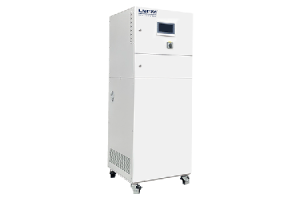What type of chiller is needed for low-temperature etching?
The low-temperature etching process usually requires extremely high precision temperature control and strong cooling ability to maintain stable operation of the etching equipment at extremely low temperatures, in order to achieve finer etching effects and optimize the performance of semiconductor devices.
For this requirement, the applicable types of coolers mainly include:
Multi channel chiller: A chiller with multiple independent temperature control circuits that can accurately control the temperature of different parts, ensuring uniform and stable temperature throughout the entire system. This is particularly important for complex etching equipment that requires maintaining different temperatures in different regions.
Low temperature chiller: This type of cooler is designed to generate and maintain extremely low temperatures, providing cooling capacity from ambient temperature to far below freezing point, suitable for low-temperature etching process requirements such as -70℃.
Closed loop refrigeration system: The closed loop system can more effectively control temperature and reduce energy consumption, suitable for etching processes that require long-term stable low-temperature operation, while reducing the impact on the external environment.
Semiconductor specific chillers: These chillers are customized to meet the needs of the semiconductor industry and have characteristics such as high-precision temperature control, fast response, low vibration, and low noise. Some are also designed with special material heat exchangers to cope with corrosive environments.
Handheld low-temperature chiller: Although not as widely used in production lines as large chillers, handheld low-temperature coolers may also be adopted in certain specific local low-temperature control or portable application scenarios due to their flexible and convenient advantages.
Therefore, the chiller used must not only achieve the required low temperature, but also be compatible and capable of handling cooling media under such special working conditions, while also having good corrosion resistance. When choosing a cooler, factors such as energy efficiency, ease of maintenance, level of intelligent control system, and ease of integration into existing production lines should also be considered.
Customization of chiller solutions
Related recommendations
-
Japanese Industry Cooling What Are Process Chillers Used For
1076Process chillers in Japanese industry provide precise, reliable cooling for electronics, automotive, pharmaceutical, and chemical production.
View details -
Which Type of Chiller Can Be Chosen for Cooling XRD?
1650Which Type of Chiller for Cooling XRD?
View details -
Recrystallization temperature and influencing factors?
1318Recrystallization is the process of recrystallizing crystals from a solution or melt after they are dissolved in a solvent or melted. Recrystallization can purify impure substances or separate mixed salts from each other. Among them it is the r...
View details -
Several Common Troubleshooting Methods for Ultra-low Temperature Freezer in Laboratories
16201. After power supply is switched on, the air switch of the main power supply is automatically disconnected.Elimination method: Check whether the compressor of refrigeration system is damaged or not, and replace the parts if damaged. After replaci...
View details -
How to solve the alarm signal issued by the chillers of the battery module?
1618The battery module refrigeration and heating machine is mainly in the fields of electronics, metal, aviation, automobile, scientific research, etc. So how to solve the problem when the equipment sends out an alarm signal? The circulation system of...
View details -
Basic structure manual of industrial chiller
1804Industrial chillers are composed of compressors, condensers, evaporators, expansion valves and other accessories. 1. Compressor: In the industrial chiller system, the compressor is the power to ensure refrigeration. The compressor is used to incre...
View details
 LNEYA Industrial Chillers Manufacturer Supplier
LNEYA Industrial Chillers Manufacturer Supplier















